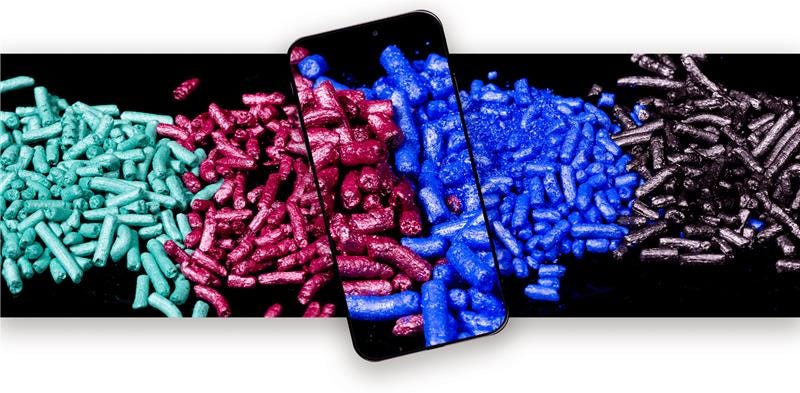What’s in a Good Body Lotion? Key Ingredients and Formulation Tips for Hydration and Skin Health
Body lotions are a daily essential for many consumers—but behind their smooth textures and subtle scents lies a complex formulation designed to deliver hydration, nourishment, and comfort to the skin. More people are asking, “What is in body lotion?”, looking for transparency and functionality in their personal care products. Whether you're creating a lightweight, fast-absorbing lotion or a rich, nourishing emulsion, every component serves a specific purpose in how the product performs and feels.
As consumers become more ingredient-conscious, formulators are expected to not only deliver results but also educate. Understanding the role of each ingredient—from humectants and emollients to occlusives and actives—is key to developing lotions that meet modern skin needs across climates, preferences, and skin types.
Key Lotion Ingredients to Deliver Lasting Hydration
A body lotion’s success often comes down to how well it hydrates and maintains moisture over time. For cosmetic formulators, selecting the right lotion ingredients is key to achieving both immediate and long-term hydration while ensuring pleasant application and skin compatibility.
Humectants: Attract and Bind Moisture
Humectants help pull water into the skin, making them essential in any hydrating formula.
- Glycerin – A gold-standard humectant that’s effective, affordable, and compatible with most systems.
- Urea – At lower concentrations (2–5%), hydrates and softens; at higher levels, offers keratolytic benefits.
- Sodium PCA – A naturally occurring component of the skin’s NMF, known for excellent moisture retention.
Emollients: Smooth and Soften
Emollients improve texture and skin feel while reinforcing the skin’s lipid barrier.
- Caprylic/Capric Triglyceride – Offers silky glide without greasiness.
- Isopropyl Myristate – Enhances spreadability and improves slip in lighter lotions.
- Squalane – A skin-identical lipid with great stability and fast absorption.
Occlusives: Lock In Moisture
These create a protective film on the skin to reduce transepidermal water loss (TEWL).
- Dimethicone – A non-comedogenic silicone that offers a breathable barrier and smooth feel.
- Hydrogenated Polyisobutene – A silicone alternative with emollient and occlusive benefits.
- Lanolin – An effective occlusive and emollient, especially useful in barrier repair formulas.
Plant Oils and Butters: Nourish and Replenish
Rich in fatty acids and antioxidants, these ingredients add depth to body lotion formulations.
- Shea Butter – High in oleic and stearic acids; nourishes and soothes dry skin.
- Sunflower Seed Oil – Lightweight, non-comedogenic, and high in linoleic acid.
- Cocoa Butter – Provides richness and lasting emollience with a firmer texture.
Bonus Actives for Added Benefits
- Panthenol – Soothes and hydrates while supporting barrier repair.
- Niacinamide – Brightens, improves elasticity, and helps reduce TEWL.
- Allantoin – Calms irritation and promotes skin regeneration.
With these lotion ingredients, formulators can build hydrating systems tailored to various skin types and climates—whether targeting dryness, dullness, or daily moisturization.
Texture Matters: Matching Body Lotions to Skin Needs
In body care, texture isn’t just about luxury—it’s about functionality. The sensory profile of body lotions plays a major role in consumer satisfaction and product performance, and getting it right starts with understanding the needs of different skin types.
For normal to oily skin, lightweight lotions are often preferred. These formulas absorb quickly, leave minimal residue, and hydrate without adding excess shine. They typically feature a higher water content and fast-absorbing emollients like caprylic/capric triglyceride or squalane, along with low-viscosity humectants like glycerin or aloe vera extract.
Dry or sensitive skin requires richer, more occlusive body lotions. These benefit from a higher oil phase and barrier-repairing ingredients like ceramides, shea butter, and panthenol. The texture should feel nourishing and protective, providing a long-lasting cushion against transepidermal water loss (TEWL).
Formulators should also consider seasonal shifts and geographic climates. In colder or drier environments, users often prefer heavier, more protective lotions. In hot or humid climates, breathable and non-greasy formulations tend to perform better.
Choosing the right combination of humectants, emollients, and occlusives—along with the right emulsifiers and stabilizers—allows formulators to craft body lotions that feel elegant while delivering on hydration and comfort.
Formulation Tips: Building Your Own Lotion Recipe
Creating a high-performing body lotion starts with a solid understanding of emulsion design. Whether you're developing a simple hydration-focused product or a multifunctional treatment, the right balance of ingredients and structure is essential. A good lotion recipe typically follows a basic framework, which can be adjusted based on target skin type, texture preference, and performance claims.
A standard lotion formula often includes:
- Water phase (70–80%) – The base of most emulsions, including water, hydrosols, and water-soluble actives or humectants like glycerin or sodium PCA.
- Oil phase (10–20%) – This includes emollients, occlusives, and oil-soluble actives or esters. For lightweight lotions, keep this phase on the lower end. For richer lotions, increase the oil content and incorporate butters like shea or cocoa butter.
- Emulsifier system (2–6%) – Crucial for stabilizing the oil and water phases. Options include glyceryl stearate, cetearyl alcohol, or more modern natural-origin systems.
- Actives (0.5–5%) – Add function with ingredients like niacinamide, panthenol, or centella extract, depending on the desired benefit.
- Thickeners or rheology modifiers (as needed) – To achieve the desired viscosity and stability, consider carbomers, xanthan gum, or acrylates copolymers.
- Preservatives (0.5–1%) – Essential for product safety. Use broad-spectrum systems like phenoxyethanol/ethylhexylglycerin or sodium benzoate/potassium sorbate, based on your formulation pH.
pH should typically fall between 4.5 and 6.0, depending on the actives used and the skin compatibility target. Always test and adjust accordingly.
Once you have your base lotion recipe, tweak texture and feel by adjusting your oil-to-water ratio, swapping in different emollients, or modifying your emulsifier system. Don’t forget to conduct stability testing, especially if your formula includes heat-sensitive actives or natural ingredients prone to oxidation.
With this flexible approach, you can create custom body lotions that deliver hydration, repair, and elegance—tailored for every formulation brief and consumer need.
Clean and Conscious Formulating: What to Leave Out
As the demand for clean beauty, sustainability, and skin sensitivity-friendly products grows, formulators are increasingly challenged not just by what to include—but by what to leave out. When developing body lotions, choosing to exclude certain ingredients can be just as important as selecting high-performing ones.
Many consumers today actively look for lotions that are fragrance-free, non-irritating, and ethically formulated. Here are a few common ingredient types to reconsider or avoid depending on your product goals and market:
- Synthetic Fragrance and Allergens
- While fragrance enhances the sensory appeal of a lotion, it’s also one of the most common sources of skin irritation. Consider offering fragrance-free or hypoallergenic versions, or use IFRA-compliant allergen-reduced fragrance blends.
- Drying Alcohols
- Ingredients like alcohol denat. or SD alcohol 40 can strip moisture from the skin, especially in formulations intended for dry or sensitive users. If quick-dry is needed, look for alternatives like volatile silicones or sugar-derived solvents with better skin compatibility.
- Controversial Occlusives and Silicones
- While effective, ingredients like petrolatum or dimethicone may be excluded in clean-label formulations. If you're developing for a natural or eco-conscious market, consider using plant-derived occlusives like hydrogenated polyisobutene, rice bran wax, or vegetable-based butters.
- Microplastics and Non-Biodegradable Polymers
- Some traditional texture enhancers and film formers are under regulatory scrutiny. Look for biodegradable alternatives to meet sustainability goals and regional regulations.
- Non-Vegan Ingredients
- For vegan claims, avoid beeswax, lanolin, or animal-derived collagen. Substitutes like candelilla wax, plant squalane, and fermented vegan collagen alternatives are widely available.
Today’s consumers want more than results—they want transparency, intention, and ethics in the products they use. Choosing the right body lotion ingredients also means being mindful of market expectations and future-proofing your formulas for global compliance and brand trust.




